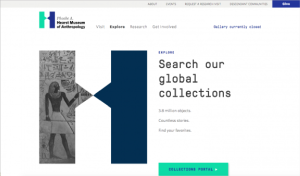 |
February 22, 2019 Volume 25, Number 8 |
General Interest |
Theme: Anthropology |
Revisited |
In the News |
General InterestBack to Top | |
 |
|
 |
|
 |
|
 |
|
 |
|
Theme: AnthropologyBack to Top | |
 |
|
 |
|
 |
|
 |
|
 |
|
RevisitedBack to Top | |
 |
|
In the NewsBack to Top | |
Measles Outbreaks Occurring Around the World | |
|
Measles cases have tripled in Europe, fueled by Ukrainian outbreak Low vaccination rates, global outbreaks fuel U.S. measles spread Clamour for vaccines as measles outbreak kills nearly 1,000 children in Madagascar How The Measles Virus Became A Master of Contagion Measles: Making a Disease Disappear The Vaccine Makers Project In recent months, headlines have been captured by outbreaks of measles, a highly contagious and potentially deadly viral disease that health officials had officially declared eliminated in the United States in 2000 and from North and South America in 2016 after a notable US outbreak in 2015. Despite these successes, measles continues to be a serious problem worldwide. The World Health Organization reported that European countries saw almost 83,000 measles cases in 2018, with more than half occurring in Ukraine, which is still struggling to contain its epidemic. In the United States, recent measles outbreaks in several states, most notably New York and Washington, have been sparked by unvaccinated travelers who became infected with measles in Israel and Eastern Europe, respectively, and carried the virus home. Madagascar is suffering from a particularly acute outbreak, where roughly 66,000 people have contracted measles since October 2018 with nearly 1,000 fatalities thus far. Outbreaks are also currently occurring in Japan, the Philippines, and Canada. Public health officials attribute the recent resurgence of measles to immunization rates below the recommended minimum of 95%, either due to lack of access in some locations (as is the case in Madagascar) or to deliberate avoidance of vaccines in other places. [JDC] The first three links lead to recent news articles about the ongoing measles outbreaks. The first article, published on February 12 by Science, discusses the rise in measles cases in Europe, particularly in Ukraine. The second link, published by Reuters on February 15, leads to a concise article about current measles outbreaks in New York and Washington state. The third article, published on February 20 in The Telegraph, details the large measles outbreak in Madagascar. Readers curious about why measles is so extraordinarily contagious should visit the fourth link, which leads to an in-depth article written by Carl Zimmer in 2015 for National Geographic. For those interested in learning about the history and success of the measles vaccine, the fifth link leads to a 17-minute video of a TEDMED talk given in 2013 by Melinda Wharton, Director of the Immunization Services Division at the Centers for Disease Control. Finally, educators at many levels may be interested in the sixth link, where they will find well over a dozen lesson plans and other teaching resources about the science behind immunology provided by the Vaccine Makers Project, part of the Vaccine Education Center at the Children's Hospital of Philadelphia. | |
